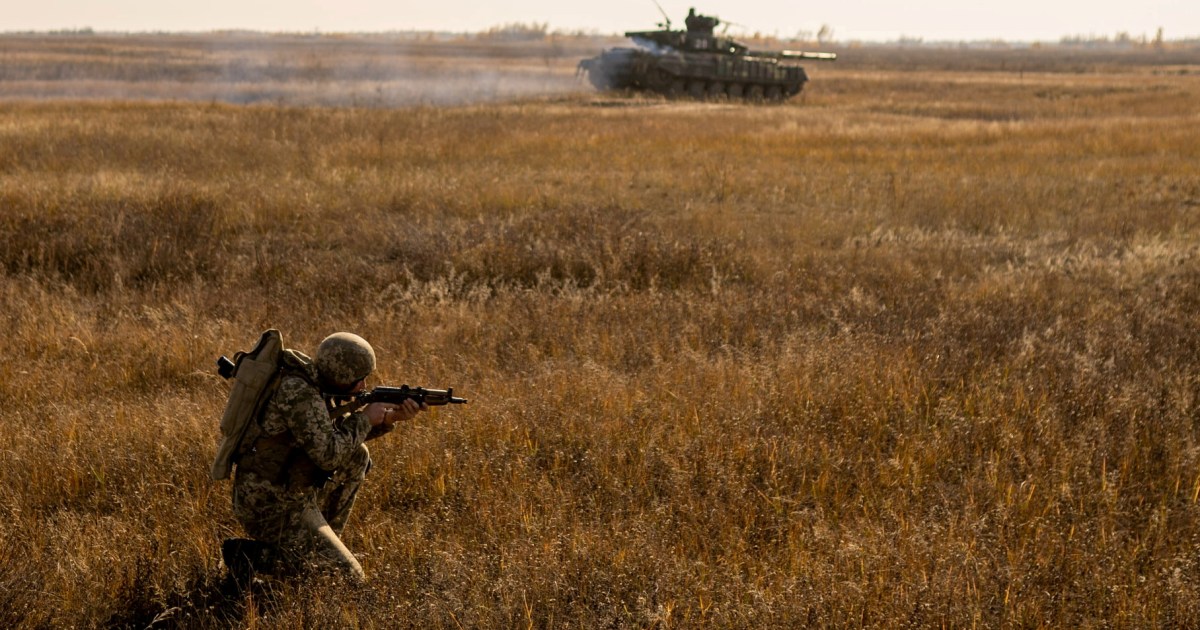In early December, the Washington Post reported a massive troop buildup by Russian forces within miles of Ukraine’s borders. According to their report, US intelligence indicated that the Kremlin is preparing 175,000 troops for a "multi-front offensive" as soon as early 2022. This aggression from Russia creates yet more tension in a region that has been tangled in conflict since Russia’s annexation of Crimea in 2014, and it triggers fears of armed conflict on European soil.
Putin’s saber-rattling on Ukraine’s borders is driven largely by his unhappiness with NATO expansion eastward following the end of the Cold War. He has not been shy about expressing his ambitions to re-establish the post-Soviet empire, including dominance in Ukraine. This includes setting an intermediate target of establishing a Kremlin-friendly Ukrainian government that resembles the current Belarus regime led by Alexander Lukashenko. This goal was echoed by the current Deputy Chairman of the Russian Security Council, Dmitry Medvedev, who argued in an op ed that Moscow should wait for ‘’sane leaders’’ in Kiev to assume power, rather than wasting time dealing with the current Ukrainian leadership.
Putin’s strategic objectives involve going nose-to-nose with the US, as it seeks to assert Russia’s geopolitical power and influence in the region and beyond.
Still, Russian President Vladimir Putin publicly claims that Russia does not want conflict, as he stated in his final press briefing this year. Putin instead blamed the West for creating “tension” on the Ukrainian border and triggering fears of war. In his marathon press conference, Putin argued that Kiev’s embrace of the West and desire to join both NATO and the European Union present a security threat to the Russian Federation. Putin demands that NATO deny membership to Ukraine and other former Soviet states, and that NATO roll back its military deployments in Central and Eastern Europe.
The Western allies have summarily rejected Putin’s demands, saying that Russia does not dictate NATO enlargement, and that Ukraine is exercising its rights as a sovereign state to partner in alliances it chooses.
As part of his strategic geopolitical efforts, Putin has also mastered disinformation media campaigns, both at home and abroad. He has gradually been shuttering or otherwise eliminating independent opposition and media voices that deliver reliable news and information. It’s working. A poll conducted by an independent Russian research center, Levada, indicated that 50% of Russians polled blame the United States and NATO for exacerbating the situation in Eastern Ukraine, and 16% believe that Ukraine is responsible for escalating the tensions. With such poll numbers, Putin does not need to worry about answering to the Russian people regarding the potential of sending their loved ones into a conflict with Ukraine.
In Kiev, Moscow’s assertive rhetoric is being met with defiance also by Ukrainians. Ukrainian Colonel Viacheslav Vlasenko exclaimed that Ukrainians are prepared to “die with arms in hands,” and asserted that Ukraine “will never be a part of Russia.” President Volodomyr Zelensky praised the Ukrainian troops that protected Ukraine’s sovereignty from “the Russian aggressor.” Life In Kiev proceeds normally, despite a raging pandemic and eternal Russian threats. The Washington Post reported Kiev’s atmosphere in the midst of the tension as merely a "shrug".
Ukrainians may have the morale to fight for their country, but they lack the weaponry to do so effectively. Thanks to Western armaments, Ukraine’s military is significantly stronger than they were in 2014, but still not strong enough to defend against the Russian army. In the event of a Russian invasion, the Ukrainians would be quickly overwhelmed. Ukraine has asked the United States for defense assistance in order to deter potential Russian aggression. President Biden’s national security team, led by Jake Sullivan, is currently assessing Ukraine’s military needs in creating appropriate defense aid packages.
At Putin’s request, Biden and Putin spoke again on December 30th. Biden clearly wants to calm the rising tensions by maintaining an active dialogue with Putin, though he warned Putin of severe consequences should Russia invade Ukraine. Meanwhile, Biden seeks a unified front with Ukraine and European countries that border Russia (the Baltic states and Poland), reassuring them of US support. Exactly what “US support” means, however, is not entirely clear. Further talks are scheduled for January in Geneva with Russia, the US, NATO and OSCE (Organization of Security and Cooperation in Europe).
Putin has surely assessed the US as being both greatly weakened and divided right now, without much appetite for another far-off conflict. Biden’s insistence on de-escalation in Ukraine is viewed by Putin as a bargaining chip, where Russia can dictate how current tensions may be de-escalated, though at a cost to the West — with Russia maintaining meaningful influence in Ukraine, and possibly Eastern Europe.
While managing the US, Russia is also taking advantage of a new German government ruled by the Social Democratic Party that is more dovish towards Moscow. Into the middle of negotiations with the EU, Putin has strategically positioned Russia’s Nord Stream 2 pipeline that carries gas from Russia to Germany. As aptly put by Patrick Wintour for The Guardian: “By handing Putin such potential leverage over European energy security, it is argued, the 1,200 km pipeline leaves Free Europe at his mercy.”


















